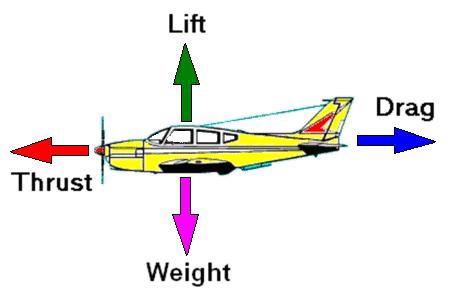- The physics behind the
phenomena of lift relies on Bernoulli's
principle. Bernoulli's principle states
that a fluid moving at higher velocity has a
lower pressure. In an airfoil wing, the
top of the wing has more surface area than the
bottom. Because the plane is moving at
the same velocity relative to the air above
and below the wing, the air on the top has to
move at a higher velocity compared to the
bottom in order to cover the larger
area.
- The difference in velocity
between the top of the wing and the bottom
creates a pressure difference in which the
pressure at the bottom of the wing is greater
than the pressure above the wing.
- The greater pressure in the
bottom creates a buoyant force which pushes
the plane upwards and because of Newton's
third law of equal action/reaction
pairs, the plane also pushes the air down
.
http://www.cap-ny153.org/forceslift.htm
Piper Super Cub
Force due to gravity: Fg=32.2 (ft/S^2)*1750
(Lb)=56,350
Lift can be equated using L = Cl
* A * .5 * r * V^2
Where L=lift, based on V=velocity,
r=density, A=wing area, and CI=Lift coefficient.
Bush planes have a rather low lifting force that
is needed to fly making them desirable in the
Alaskan backcountry where abundant runways may
be limited.
Home Page

